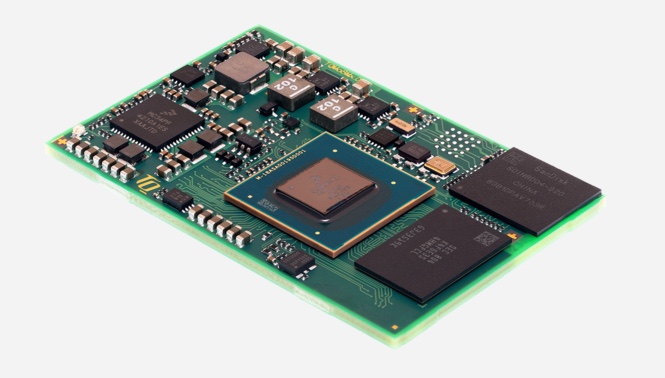Blog
Recent Posts
Embedded ARM Modules For IoT Applications Support Two CAN FD Ports
Posted by on
The TQMax4xxl modules by TQ Systems represent an LGA (Land Grid Array) based on the Sitara AM243x microcontroller and the AM64xx processor with up to six cores from Texas Instruments. Possible applications include servo motor controllers (for robotics), industrial gateways, data collectors, and small edge servers in production, providing data for the cloud. The module size of 38 mm x 38 mm includes two CAN FD interfaces, up to four real-time capable 1-Gbit/s Ethernet ports, USB 2.0 or USB 3.0 channel, and a PCIe interface for connecting mass storage devices. In addition, it offers an SD card slot, memory extension, and optional security functions. The supported operating systems include Linux and Realtime OS (AM64xx) and Free RTOS (AM243x).
The TQMaRZG2x COM (Computer On Module) utilizes the 64-bit RZ/G2 multi-core processor (ARM Cortex A53/A57) from Renesas. It is especially suited for robotics, optoelectronics, transportation, medical technology, and human-machine interfaces. Memory expansions allow up to 8 GiB, data security options, two CAN FD interfaces, two USB 3.0, a 1-Gbit/s Ethernet, two MIPI-CSI for camera sensors, LVDS display output, HDMI, SD card, and more. A PCIe slot permits additional extensions such as WLAN (wireless LAN) modules.
Teensy 4.0 Triple CAN Bus Board with Two CAN 2.0B And One CAN FD Port
The Teensy 4.0 Triple CAN-Bus Board is a Teensy 4.0 board with triple CAN Bus connections, two Classical CAN 2.0B, and one CAN FD. It can be powered by an external +12 VDC power supply with reverse voltage protection.
The Teensy 4.0 is an Arduino-compatible board with an Arm Cortex-M7 microcontroller running at 600 MHz. The board is compatible with the Arduino IDE and the Arduino library. Usually, code written for another Arduino board works with minimum changes on a Teensy. As the name implies, the board is tiny. For example, the current form factor is only about 18 by 36 millimeters. However, do not let the size mislead you; these boards pack a ton of functionality. For example, the new Teensy 4.0 features a megabyte of RAM, two megabytes of Flash, a bevy of I/O options, cryptographic support, a hardware floating-point processor (FPU), and a built-in real-time clock (RTC).
Designing Embedded Systems For The Internet of Things (IoT) Using ARM, Arduino, Raspberry Pi, BeagleBone
The IoT: Building Arduino-Based Projects course will take you on a journey to become an expert in the use of IoT by developing a set of projects and will guide you through securing your IoT environment.In the first module, Learning Internet of Things, you will learn how protocols and patterns can put limitations on network [...]
STM32 Development Board Implements CAN FD On-Chip Modules, Supports Arduino And ARM mbed Platforms
ST Microelectronics announced their Nucleo-144 boards, featuring an STM32 micro-controller in an LQFP144 package. The board’s Zio connector enables connection to Arduino Uno V3. The development board does not require any separate probe as it integrates the Link/V2-1 debugger/programmer. It comes with Ethernet and USB connectors. The board is not equipped with CAN transceiver, although the STM32 [...]
 Loading... Please wait...
Loading... Please wait...


